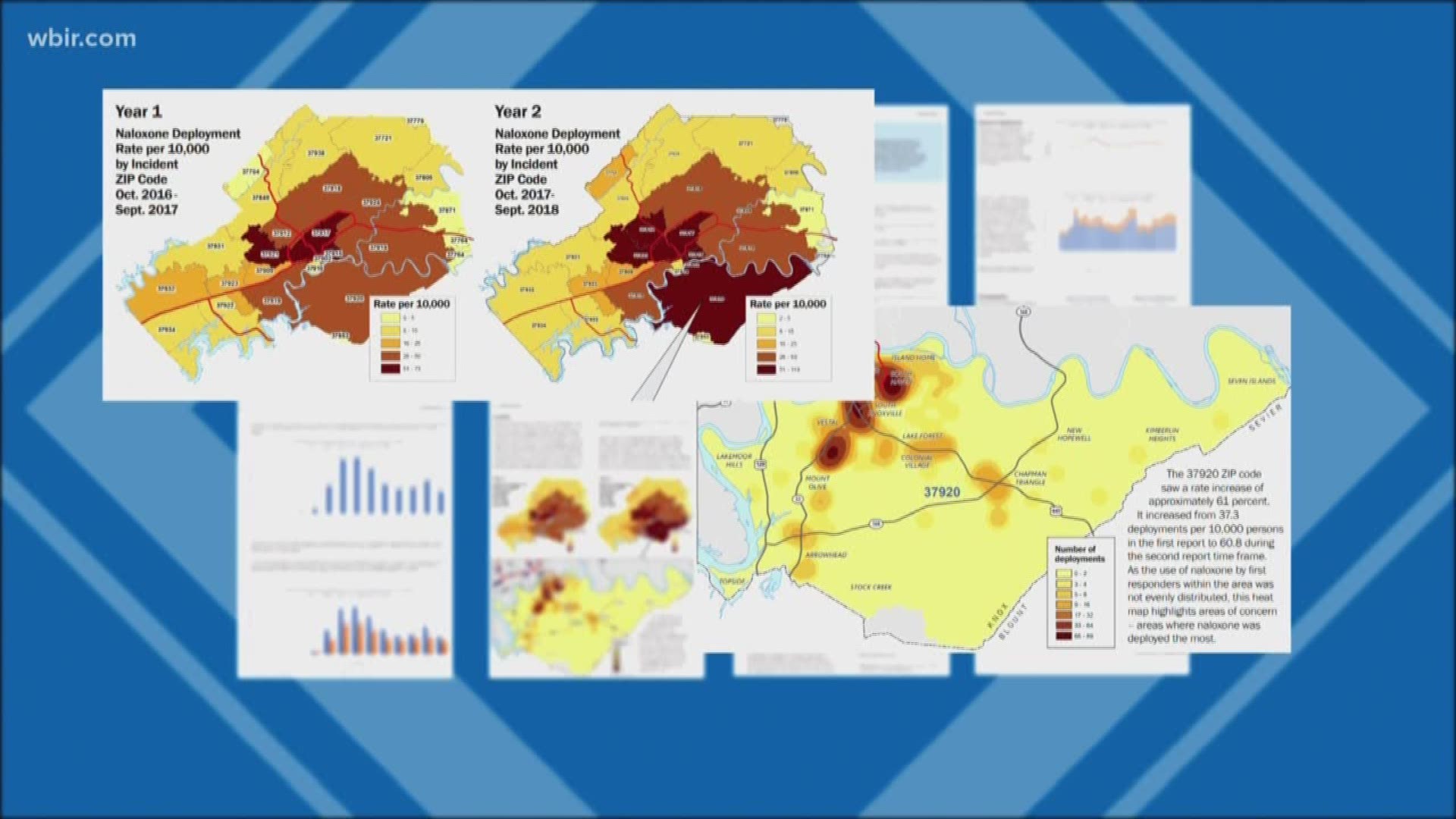KNOX COUNTY, Tenn. — The Knox County Health Department, with the support of the Harm Reduction Coalition, released its second report Monday on naloxone deployment by first responders. It found that more than 2,700 individuals received naloxone from Oct. 1, 2016 to Sept. 30, 2018.
Naloxone, also known commercially as Narcan, is administered by first responders when a person is suspected of overdosing on opioids. Agencies in Knoxville typically carry and administer a standard 2.0 mg dose of naloxone (nasal spray formulation) to those suspected of overdosing. When someone needs more, first responders adjust.

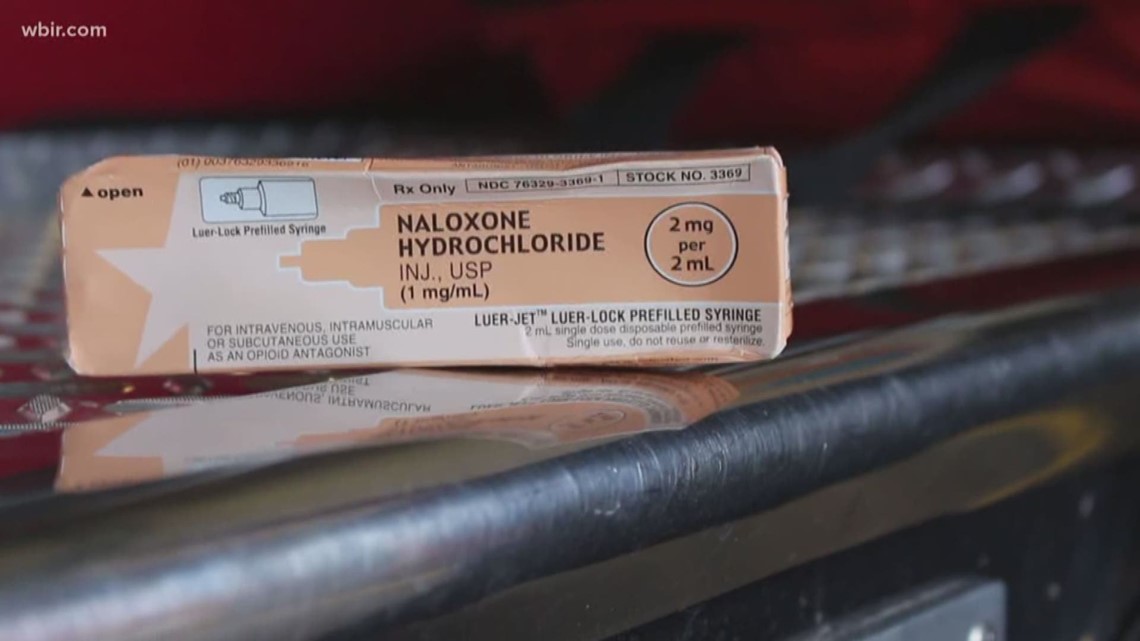
The report compiles naloxone deployment data from AMR Rural/Metro Emergency Medical Services (EMS) and Fire, the Knoxville Fire Department, and Knoxville Police Department from October 2016 to September 2018.
The Harm Reduction Coalition is studying naloxone deployment and releasing the findings to help both the coalition and the larger community better understand the substance misuse epidemic.
"Since Oct. 1, 2016, nearly 3,700 doses of naloxone were deployed by first responders in Knox County. More than 250 individuals required the medication on more than one occasion over the span of 24 months. More deployments occurred in winter months with peak deployment occurring in January. This pattern was seen during both years of data collection," the report said.

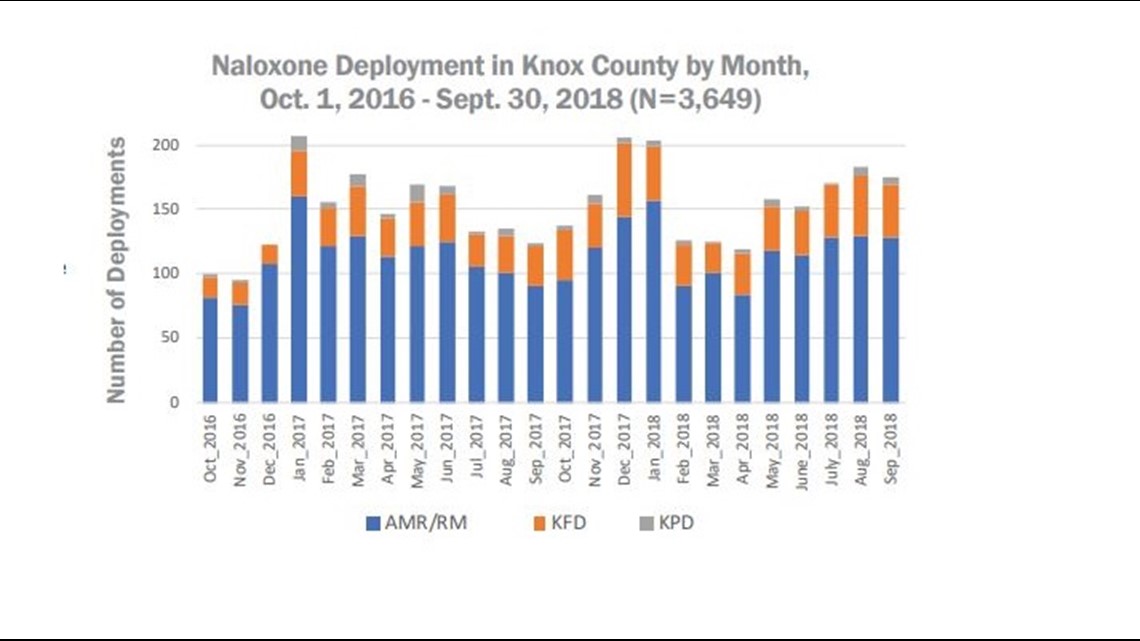

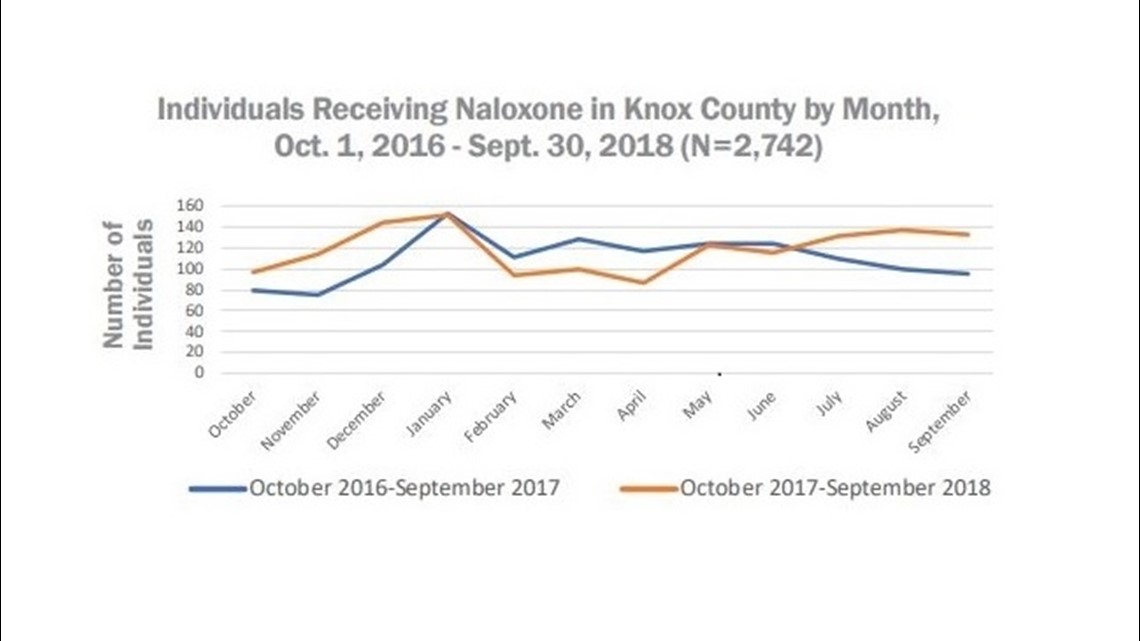
The report found an average of 114 individuals received naloxone each month which is an average of four a day.
It also found that white males ages 25 to 39 received naloxone most frequently. Since 2017, the report found the number of individuals receiving naloxone increased by 7.7 percent.
While nearly 90 percent of individuals received the medication once in the span of 24 months, it found 10.7 percent required the medication on more than one occasion.
Last year, the Metro Drug Coalition announced that more than 1,200 people received naloxone in Knox County from October 2016 to September 2017.
Similar to the demographic makeup of Knox County, individuals who received naloxone were predominately white. The report found black individuals made up 8 percent of those receiving naloxone, while 10 percent of individuals did not have race/ethnicity listed or declined to provide the information.
According to the report, naloxone deployments among white individuals increased by 8.1 percent and decreased among black individuals by 10.6 percent since the first report of naloxone deployment. The number of individuals who received naloxone were predominately male (60 percent), which has not changed since the first report.

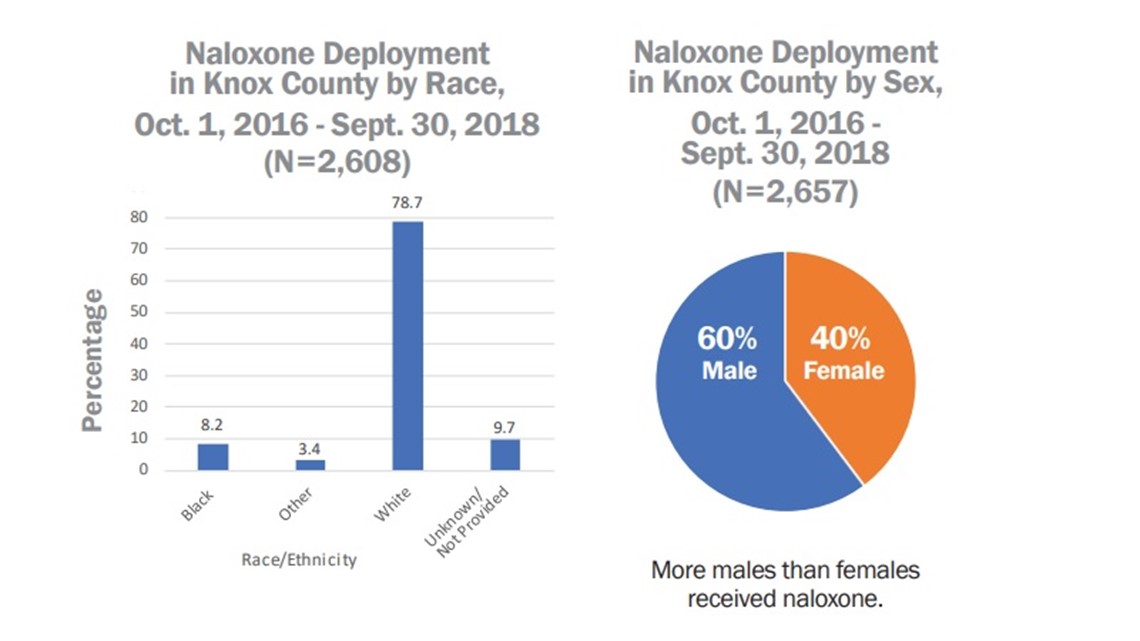
Naloxone was most frequently deployed in the 37920, 37921, 37917 and 37918 ZIP codes, according to the report.
RELATED: WATCH: Body camera videos show Alcoa Police officers reviving people with Narcan after overdoses
The 37920 ZIP code saw a rate increase of approximately 61 percent. It increased from 37.3 deployments per 10,000 persons in the first report to 60.8 during the second report time frame. As the use of naloxone by first responders within the area was not evenly distributed, this heat map highlights areas of concern – areas where naloxone was deployed the most.

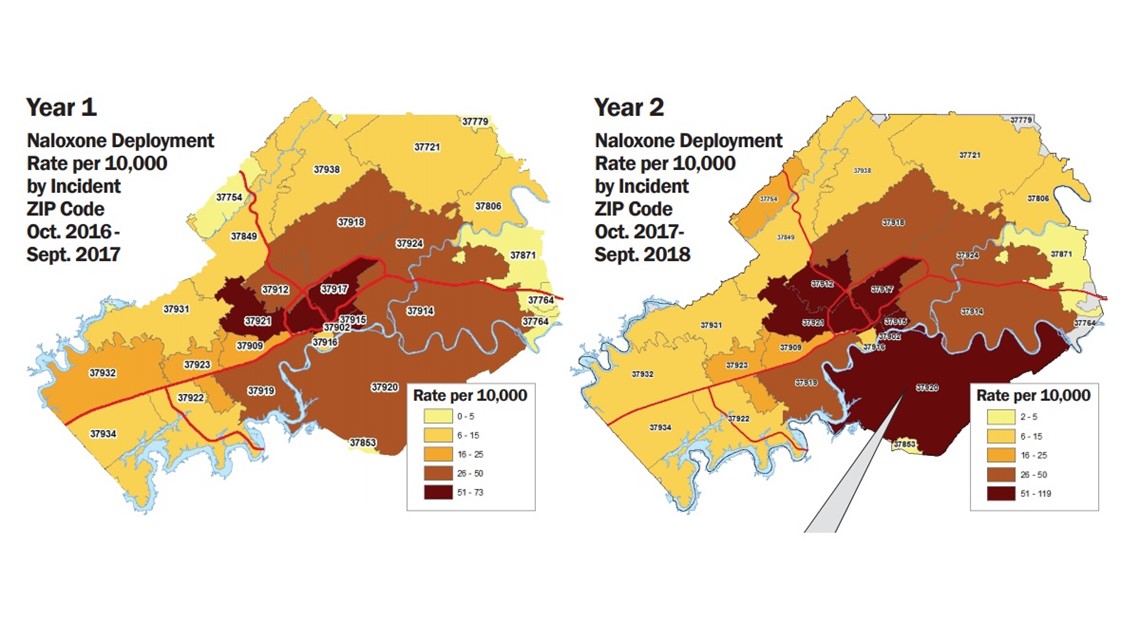
“It’s crucial that we have comprehensive data and that we use it to inform how we address this devasting issue, only then can we develop a more targeted and effective response,” said KCHD Director Dr. Martha Buchanan. “While the information in this report will help advance our efforts and those of our partners, it’s important to note that these findings are just the tip of the iceberg. There are likely many, many more people in our community suffering from substance use disorders.”
In 2018, Knoxville Firefighters said they administered naloxone 492 times. In 2017, they administered it 403 times. That's up from 122 times in 2016 and 52 times in 2015.
Harm Reduction Coalition Members include American Medical Response (AMR) Rural/Metro EMS and Fire, Appalachia HIDTA, Cherokee Health Systems, City of Knoxville, Cornerstone of Recovery, Helen Ross McNabb Center, Knox County District Attorney General’s Office, Knox County Health Department (KCHD), Knox County Schools, Knox County Regional Forensic Center, Knox County Sheriff’s Office, Knoxville Fire Department (KFD), Knoxville Police Department (KPD), Metro Drug Coalition, Next Step Initiative, Positively Living, Samaritan Ministries, and South College School of Pharmacy.
The Harm Reduction Coalition asks the community of Knox County to consider the following actions:
• Learn how to use naloxone
• Carry naloxone with you to potentially save a life
• Reduce the stigma of addiction by educating yourself and then spread the word
• If you are a parent, talk to your child about substance misuse: drugfree.org/
• Keep all medicines in the home secured in a lock box or locked medicine cabinet
• Safely dispose of all unused and no longer needed medications: countitlockitdropit.org

